#3DProductRendering
Explore tagged Tumblr posts
Text
Mastering Self-Taught 3D Modeling: A Comprehensive Guide
Learning 3D modeling independently can be an immensely rewarding endeavor. Below, you'll find a step-by-step guide to embark on this creative journey successfully:
Define Your Objectives: Begin by clarifying your reasons for learning 3D modeling. Are you interested in game design, animation, architecture, or another specific application? Establishing clear goals will help you stay motivated and focused.
Select Suitable Software: Numerous 3D modeling software options are available, ranging from free to paid. Popular choices include Blender (free and open-source), Autodesk Maya, 3ds Max, Cinema 4D, and ZBrush. Choose software that aligns with your goals and budget.
Grasp the Basics: Start with the fundamentals. Familiarize yourself with the software's user interface, navigation, and basic tools. Most software packages offer introductory tutorials and documentation to facilitate your initial steps.
Access Online Courses and Tutorials: A wealth of online courses and tutorials awaits you on platforms like YouTube, Udemy, Coursera, and Khan Academy. Seek out beginner-level courses that cover the basics of 3D modeling. Follow along and practice consistently.
Regular Practice: Improvement in 3D modeling is directly linked to practice. Dedicate time to create simple objects, experiment with tools, and gradually advance to more intricate projects. Steadfast practice is key.
Study Anatomy and Reference Materials: For those interested in character modeling or organic shapes, in-depth knowledge of anatomy and reference materials is invaluable. This understanding enhances the realism of your creations.
Master Texturing and Materials: Explore texturing techniques and materials. Proficiency in applying textures, shaders, and materials to your 3D models is essential for achieving realistic renders.
Delve into Specializations: 3D modeling encompasses a wide array of specializations, such as character modeling, architectural visualization, product design, and more. Explore various areas to discover your passion.
Engage in Online Communities: Connect with fellow 3D artists and enthusiasts through forums, social media, and 3D modeling communities. Sharing your work, seeking advice, and receiving feedback can be immensely beneficial.
Develop a Portfolio: As your skills evolve, start crafting a portfolio showcasing your finest work. A well-structured portfolio is essential if you aim to pursue a career or freelance opportunities in 3D modeling.
Stay Current: The 3D modeling field is in constant flux. Stay informed about the latest trends, techniques, and software updates by following industry news, blogs, and online courses.
Consider Advanced Training: If you're committed to a career in 3D modeling, contemplate advanced training or pursuing a degree in computer graphics, animation, or a related field. Such education can broaden your horizons.
Innovate and Experiment: Dare to innovate and experiment. Push the boundaries of your creative abilities, and don't be disheartened by setbacks. Learning from your mistakes is an invaluable part of your journey.
Cultivate Patience and Perseverance: Mastering 3D modeling is a gradual process, and each individual progresses at their own pace. The key is to maintain patience, practice consistently, and persist through challenges. Remember that setbacks are a natural part of the learning process.
Recommended Article:
3D Jewelry Rendering For Online Store
Embarking on the path of self-taught 3D modeling can be challenging, but with dedication and the guidance provided above, you can make remarkable progress and achieve your artistic and career goals.
#3dfurniturerendering#3dproduct#3dproductrendering#3dproductvisualization#3dproductvideo#3danimationvideo#3dfurniturerenderingservices#3dproductanimation#3djewelryrenderingservices#3dproductrenderingservices
2 notes
·
View notes
Text
#3dfurnituremodeling#3dfurniturerendering#3dfurnituremodelingstudio#3dmodelingstudio#3dfurniturerenderingservices#3dproductmodeling#3dproductmodelingservices#3dfurnituremodelingcompany#3dproductrenderingservices#3dproductrendering
2 notes
·
View notes
Text
3D Product Modeling: A Step-by-Step Guide to Elevate Your Product Visualization

In today’s competitive market, 3D product modeling has become a game-changer for businesses looking to create lifelike representations of their products. This technique not only enhances the way customers perceive products but also plays a significant role in streamlining the design and development process. With advancements in technology, brands now have access to tools that make this process more accessible and efficient than ever before.
Understanding the Role of 3D Product Rendering Companies
A 3D Product Rendering Company specializes in creating realistic images of products using advanced rendering techniques. These services are essential for showcasing products in various marketing materials, e-commerce platforms, and catalogs. Whether you’re launching a new product or revamping an existing one, partnering with such companies ensures that your product stands out with exceptional visual appeal.
Why You Should Consider a 3D Product Animation Agency
If you’re aiming to capture your audience’s attention in a dynamic way, working with a 3D product animation agency can be transformative. These agencies bring products to life by creating animations that showcase functionality, features, or design intricacies. This is particularly effective for industries like automotive, electronics, and furniture, where movement and interaction significantly influence customer decisions.
The Value of 3D Product Modeling Services
Investing in 3D product modeling services allows businesses to experiment with designs, materials, and aesthetics before committing to physical prototypes. This approach saves both time and money while enabling brands to perfect their product designs. From conceptualization to final visualization, these services cater to the needs of businesses across diverse sectors.
Conclusion
By leveraging the power of 3D visualization, businesses can elevate their product presentation and connect with customers more effectively. Whether it’s through photorealistic renders or captivating animations, embracing modern visualization techniques is key to staying competitive. For businesses looking for top-notch solutions, Advertflair offers unmatched expertise in 3D product modeling and design services, ensuring your products make a lasting impression.
0 notes
Text
Is the cost of 3D product rendering holding you back? 🤔 Discover how much it costs and how to get the best value for your investment. Our latest blog breaks down the factors influencing the price and shares tips for choosing the right service provider.
Read Our Blog: https://arise3d.com/how-much-do-3d-product-rendering-services-cost/
0 notes
Text
#3Drendering#3Danimation#3Dmodeling#3Ddesign#3Darchitecturalrendering#3Dproductrendering#3Dcharacterrendering#3Dlandscaperendering#3Dinteriorrendering#3Dvisualization#Blender#Maya
0 notes
Text
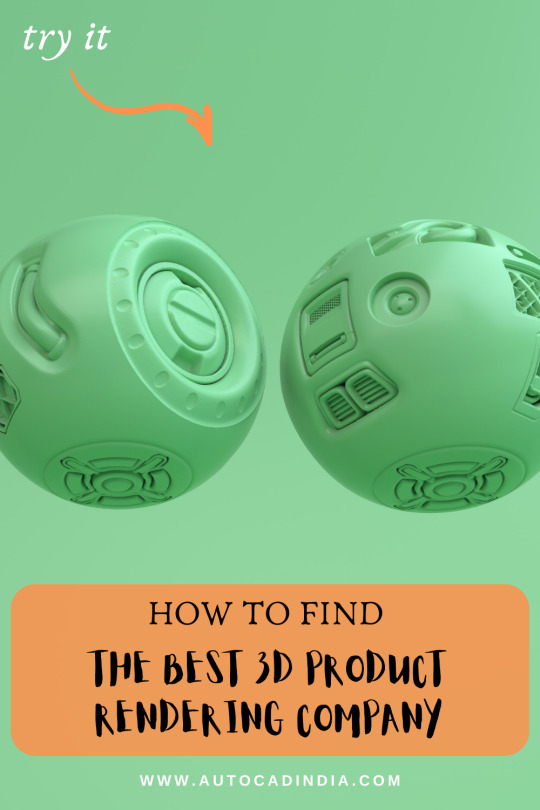
Looking for the best 3D product rendering company to bring your product to life? Look no further! In this post, we'll guide you through the key factors to consider when choosing a 3D product rendering company, from their portfolio and experience to their communication and project management skills.
With these tips, you'll be able to find a company that will deliver high-quality, photorealistic renders that will take your product to the next level. Let's bring your product vision to reality!
0 notes
Photo










3D Furniture Rendering with KAMO Sales Collaborative
BlueRibbon 3D Furniture Modeling agency offering realistic and intuitive product modeling services to bring your designs to life.
Visit: - https://www.blueribbon3d.com
Watch this: https://youtu.be/Gn5Gw0u2WLU
Call us on: - +91-9624465429
#3dfurnituremodeling#3dfurniturerendering#3dfurniture#3dproductrendering#3dproductmodeling#3dmodelingstudio#3dfurnituremodelingstudio#3drendering#3dmodeling#photorealisticrendering
0 notes
Photo
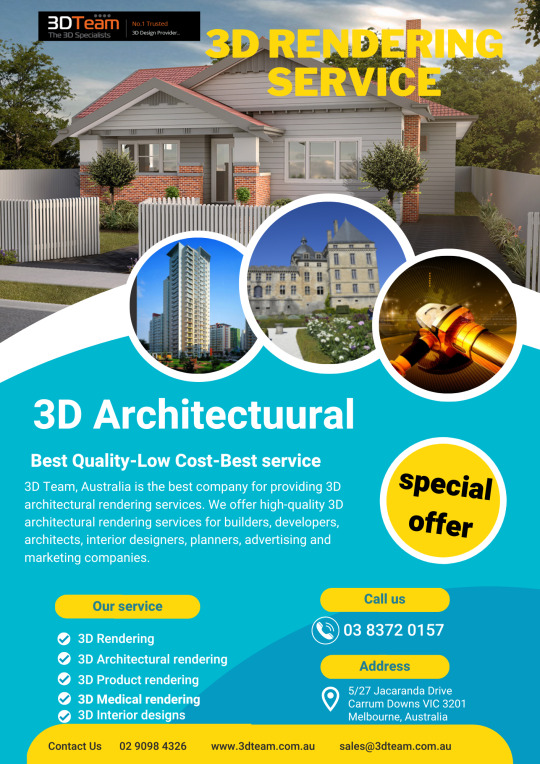
3D rendering examples the creation of an idea requested by a client it may be a real-world object or an imaginary that represented in a sketch say, architectural, interior design or products.
0 notes
Text
Have you Met Jaws? Watch Us Have Too Much Fun! Achieve 3D Printing Zen! 3D Print Stick is on a mission to irradicate poor bed adhesion and reduce failed 3D prints. Our new "Bed Adhesion Applicator XL" includes a durable woven mesh jumbo applicator with the large capacity of our proprietary adhesive. Together these features ensure repeated successful prints. Learn More at 3DPrintStick.com
1 note
·
View note
Text
Unlocking the Power of Product Rendering: A Comprehensive Guide
In the realm of digital marketing and e-commerce, visuals play a pivotal role in attracting and retaining customers. One of the most powerful tools in this arsenal is product rendering. By seamlessly blending creativity and technology, 3D rendering has revolutionized the way businesses showcase their offerings to the world. In this comprehensive guide, we will delve into the intricacies of product rendering, exploring its benefits, techniques, and best practices for maximizing its impact on your business.
Understanding Product Rendering
Product rendering is the process of creating lifelike digital representations of physical products using computer-generated imagery (CGI). Unlike traditional photography, which often requires costly studio setups and extensive post-processing, product rendering offers unparalleled flexibility and control over the final output. From simple product shots to elaborate visualizations, rendering allows marketers to showcase their products in any setting, under any lighting condition, with pixel-perfect precision.
The Benefits of Product Rendering
Versatility: With product rendering, you can create an infinite number of variations and configurations without the need for physical prototypes. This flexibility is especially valuable for businesses offering customizable or made-to-order products.
Cost-Efficiency: While traditional photography can be expensive and time-consuming, product rendering offers a more cost-effective alternative. Once the initial setup is complete, rendering additional images incurs minimal additional cost, making it ideal for businesses operating on tight budgets.
Consistency: Unlike photography, where lighting conditions and camera settings can vary from one shoot to another, product rendering ensures consistent quality across all your visuals. This uniformity helps reinforce your brand identity and instill trust in your customers.
Speed: In today's fast-paced digital landscape, speed is of the essence. Product rendering allows you to create high-quality visuals quickly, enabling you to respond rapidly to market trends and customer demands.
Techniques for Effective Product Rendering
Photorealistic Rendering: Aim to create renderings that closely resemble real-life photographs. Pay attention to details such as lighting, materials, and textures to achieve a convincing result.
360-Degree Views: Provide customers with a comprehensive view of your products by incorporating 360-degree rotations into your renderings. This interactive feature allows users to examine your products from every angle, enhancing their shopping experience.
Contextualization: Place your products in context by rendering them within realistic environments such as living rooms, kitchens, or outdoor settings. This helps customers visualize how your products would fit into their lives, increasing their likelihood of making a purchase.
Animation: For certain products, consider incorporating animation into your renderings to highlight key features or demonstrate functionality. Whether it's showcasing a product assembly process or illustrating its usage scenarios, animation can significantly enhance engagement and conversion rates.
Best Practices for SEO-Optimized Product Rendering
Optimize Image Metadata: Ensure that each rendering is accompanied by descriptive filenames, alt text, and captions containing relevant keywords. This helps search engines understand the content of your images and improves their discoverability in image search results.
Utilize Structured Data Markup: Implement structured data markup, such as Schema.org, to provide search engines with additional context about your products. This markup can include details such as product names, descriptions, prices, and availability, making it easier for search engines to index and display your products in rich snippets.
Responsive Design: Ensure that your renderings are optimized for viewing across a wide range of devices, including desktops, laptops, tablets, and smartphones. Responsive design not only improves user experience but also signals to search engines that your site is mobile-friendly, potentially boosting its ranking in mobile search results.
Page Load Speed: Optimize the file size of your renderings to minimize page load times. Compress images where possible and leverage caching and content delivery networks (CDNs) to deliver renderings quickly to users across the globe. Faster page load speeds not only improve user experience but also contribute to higher search engine rankings.
Conclusion
Product rendering is a powerful tool that can elevate your marketing efforts to new heights. By harnessing the potential of CGI technology, businesses can create compelling visuals that captivate audiences and drive conversions. Whether you're launching a new product or revamping your existing offerings, product rendering offers a cost-effective, scalable solution for showcasing your products in the best possible light. By following the techniques and best practices outlined in this guide, you can unlock the full potential of product rendering and take your business to the next level in the digital age.
#3dproductrenderingservices#3dproductrendering#3dfurniturerendering#3danimationvideo#3dproductvisualization#3djewelryrenderingservices#3dproductanimation
0 notes
Text
Utilizing 3D Furniture Modeling for Bespoke Furniture Craftsmanship
Introduction Bespoke furniture craftsmanship involves creating unique, custom-made pieces tailored to individual preferences. At 3D Furniture Modeling Studio, we use advanced 3D modeling to support bespoke furniture design, providing detailed visualizations that bring custom ideas to life.
Bespoke Craftsmanship with 3D Models 3D furniture models provide a realistic and detailed representation of bespoke designs, allowing clients to visualize and approve their custom pieces before production. These models support the craftsmanship process, ensuring that every detail meets the client's specifications.
Key Benefits
Customization: 3D models allow for precise customization, ensuring that the final product aligns with the client’s vision.
Detailed Visualization: Clients can see and approve designs in detail, making informed decisions about materials, colors, and features.
Quality Craftsmanship: Accurate models support high-quality craftsmanship, ensuring that custom pieces are made to the highest standards.
Our Expertise At 3D Furniture Modeling Studio, we specialize in creating 3D models for bespoke furniture craftsmanship. Our models are designed to be detailed and versatile, helping craftsmen create unique and high-quality custom furniture.

#3dfurnituremodeling#3dmodelingstudio#3dproductmodeling#3dfurnituremodelingcompany#3dproductrenderingservices#3dproductrendering
0 notes
Photo
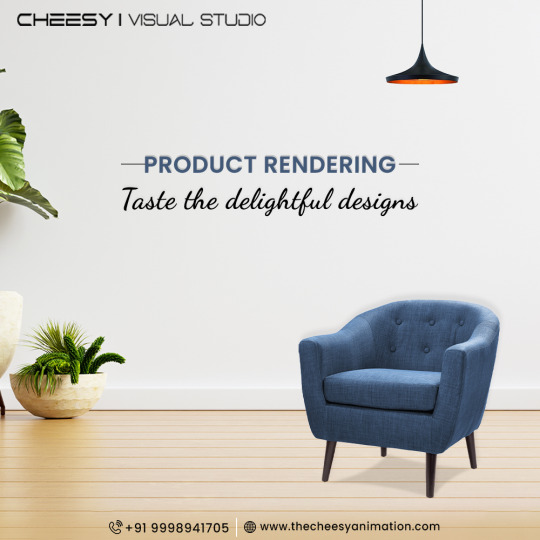
Product Modeling
Taste the delightful designs.
Call Now: +91 9998941705 Visit: https://www.thecheesyanimation.com/3d-product-modelling-and-rendering.html
#3DProductDesign#3dproductmodeling#3DProductRendering#3DRenderingService#3DRendering#3DAnimation#TheCheesyVisualStudio
1 note
·
View note
Text
3D Shoe Model | Incredimate

Incredimate creates high-quality, custom 3D Shoe models customized to your specifications with competitive pricing. Get a custom quote, within minutes, for your 3D Shoe design.
📩: Get in Touch Now: [email protected] 🌐: Visit our website: www.incredimate.com 👉: Follow: Incredimate
0 notes
Text
The Importance of 3D Rendering in Interior Design
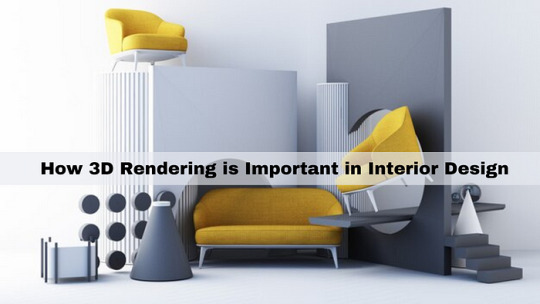
In the interior design world, visualization’s power cannot be underestimated. Clients and designers alike yearn for the ability to see their ideas come to life before a single piece of furniture is purchased or a wall is painted. This is where 3D rendering plays a crucial role.
What is 3D Rendering?
At its core, it is the process of generating a 2D image or animation from a 3D model. It involves the conversion of geometric data, textures, lighting, and other visual elements into a final image or sequence of images.
This transformation brings depth, texture, and realism to the digital representation, creating a visually captivating experience.
The Process of 3D Rendering:
Creating a 3D model of the object or scene to be rendered.
Texturing the 3D model with materials that define its appearance.
Setting up the lighting in the scene.
Rendering the image, which can be a single image or an animation.
3D rendering is used in a variety of industries:
Architecture: create realistic visualizations of buildings and other structures before they are built.
Product design: create realistic visualizations of products, such as cars, furniture, and toys.
Video games: create the graphics in video games.
Visual effects: create special effects in movies and TV shows.
The Importance of 3D Rendering in Interior Design
By leveraging advanced technology, it brings unprecedented clarity and realism to the design process. In this article, we explore the immense importance of 3D rendering in interior design and how it revolutionizes the way spaces are conceptualized and brought to fruition.
Enhanced Visualization and Conceptualization:
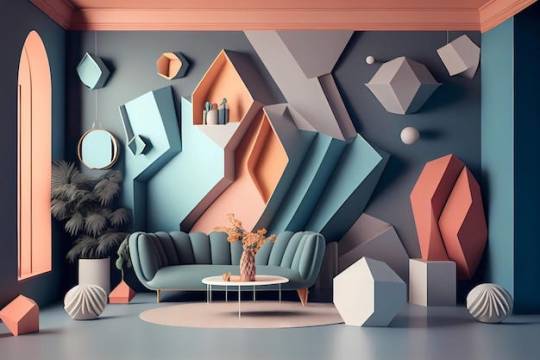
Read Related: Everything You Need to Know about 3D Interior Design
Time and Cost Efficiency:
Gone are the days of relying solely on hand-drawn sketches or 2D blueprints. 3D rendering expedites the design process by eliminating the need for costly physical prototypes. Designers can experiment with different materials, colors, and layouts in the virtual space, saving both time and money. Clients can also provide feedback early on, reducing the risk of costly revisions during the construction phase.
Realistic Material and Lighting Simulation:

Read Related: 7 Modern Sofa Trends According to Interior Designers
Effective Communication and Collaboration:
With 3D rendering, communication between designers, clients, and contractors becomes seamless. Designers can present their ideas in a visually compelling manner, ensuring that everyone involved has a clear understanding of the design intent. This facilitates effective collaboration, reduces misunderstandings, and fosters a smoother workflow.
Marketing and Presentation Advantage:
In the competitive world of interior design, standing out is crucial. 3D rendering offers a powerful marketing tool, allowing designers to create stunning visuals for their portfolios, websites, and marketing materials. These realistic renderings showcase the designer’s skills and help attract potential clients by demonstrating the transformative potential of their work.
Designers can create realistic representations of their concepts, allowing clients to visualize the end result accurately. With its immense benefits, it’s clear that 3D rendering has become an indispensable tool in the modern interior design industry.
Moreover, if you’re looking to customize your interior with the benefits of 3D rendering, then look no further! Get in touch with us at [email protected]. or simply drop us a line here to unlock the full potential of your interior design.
#3Drendering#3Danimation#3Dmodeling#3Ddesign#3Darchitecturalrendering#3Dproductrendering#3Dcharacterrendering#3Dlandscaperendering#3Dinteriorrendering#3Dvisualization#Blender#Maya
0 notes







